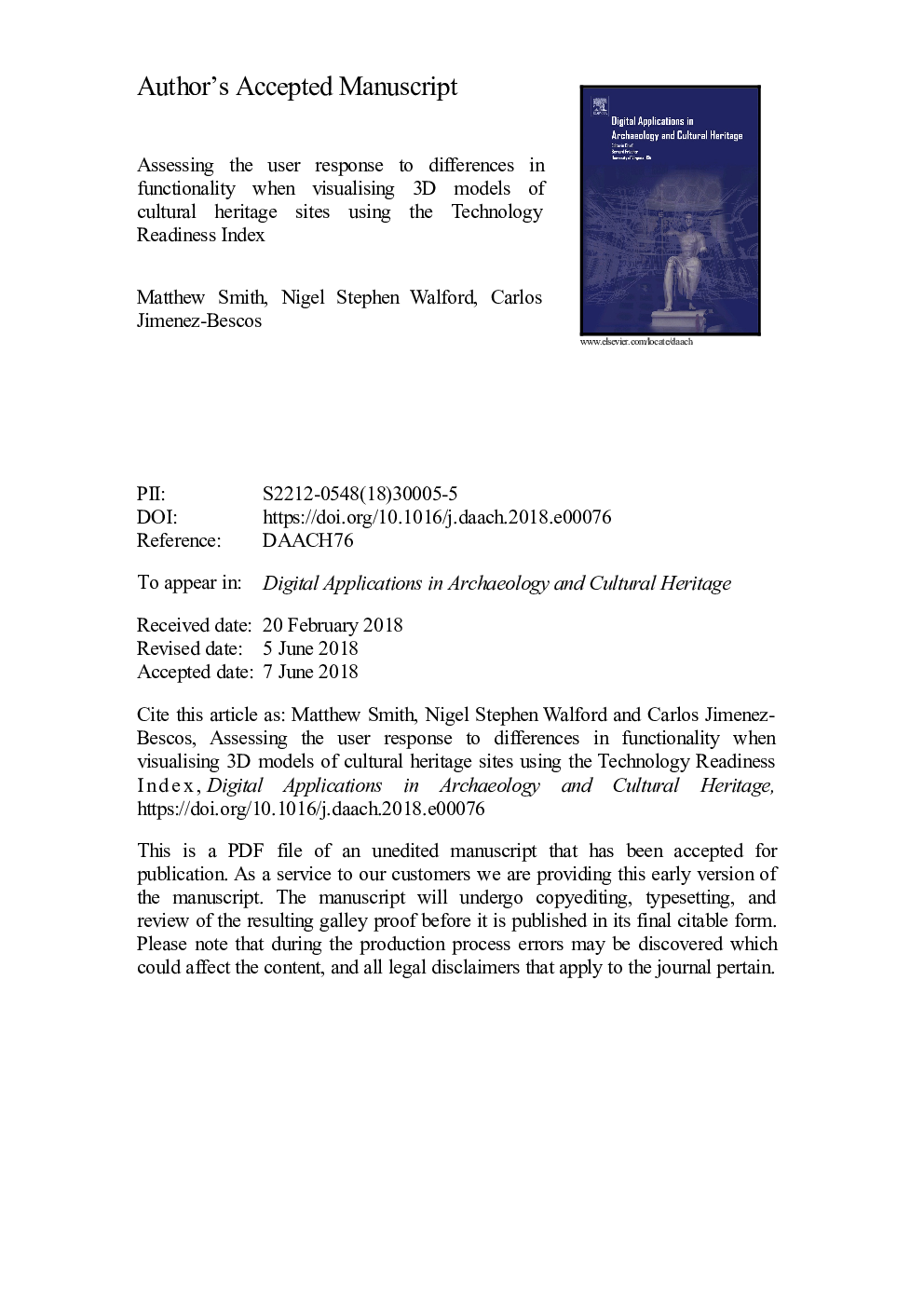| Article ID | Journal | Published Year | Pages | File Type |
|---|---|---|---|---|
| 6556209 | Digital Applications in Archaeology and Cultural Heritage | 2018 | 24 Pages |
Abstract
Visualisation of cultural heritage using 3D modelling in situ or over the Internet has increased in recent years. This paper examines people's readiness to accept these and their preferred degree of sophistication using a visualisation video of a 3D model of the Fishbourne Roman Palace in West Sussex, England. Participants viewed six visualisations in a controlled environment that sequentially added features such as texture, sound, lighting and ultimately interaction and mobility via game engine technologies. The updated Technology Readiness Index was used to group participants according to their willingness to accept the visualisations. TRI Explorers appreciated the addition of interactivity while enhanced model fidelity satisfied other groups. Linking the profile of the TRI groups with published survey results relating the characteristics of historical museum visitors suggests that TRI Explorers are not the target demographic negating the need for interactivity, although a museum's visitor profile should also be considered.
Keywords
Related Topics
Physical Sciences and Engineering
Computer Science
Computer Graphics and Computer-Aided Design
Authors
Matthew Smith, Nigel Stephen Walford, Carlos Jimenez-Bescos,
